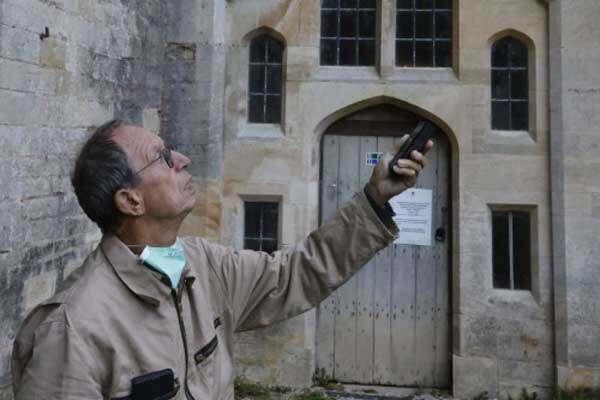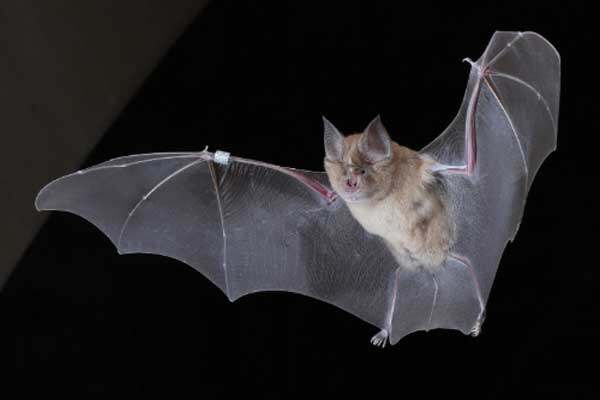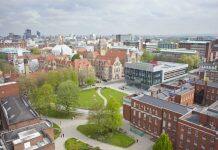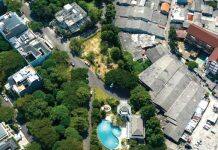A University of Bristol alumnus and honorary research fellow has been awarded a British Empire Medal (BEM) in recognition of services to bat conservation spanning more than six decades.


Image credit: Gareth Jones
Dr Roger Ransome is world-renowned for his commitment to preserving the welfare of bats, which he first started studying at Cheltenham Grammar School, aged 15.
His passion for the threatened mammals, and wildlife in general, led him to study Zoology at the University of Bristol from 1958. He also gained a PhD from Bristol for his published research in the field in 1979.
Professionally he was first a biology teacher and went on to become Head of Science at Rednock School in Dursley. Roger’s bat studies continued with senior student volunteers at the school and in 1990 he was made an Honorary Research Fellow at the University, where his ecological data was used by numerous PhD students to investigate many other areas of bat biology.
Roger, aged 84, who still lives in Dursley, said: “I am delighted to be recognised in this way, but of course one person doesn’t get this award on their own. My wife Anne has been a bat widow for many years, putting up with all the time and effort it takes. And of course the many fellow researchers who I’ve worked with have been equally instrumental, including many of my other relations. Our grandson provided excellent IT support. It’s a true team effort and this is very nice news.”
His love of bats was sparked by a talk given by a French teacher, who was a keen naturalist, when he attended Cheltenham Grammar School. Whilst a pupil there, he started studying the greater horseshoe bat (Rhinolophus ferrumequinum) in Gloucestershire, cycling to Woodchester Mansion, where they roosted.


Image credit: Gareth Jones
Greater horseshoe bats are threatened and iconic British mammals with some of the most sophisticated echolocation strategies of any animal. Roger designed and organised annual field research on this species continuously for more than 66 years, which recently resulted in a Guinness World Record for the longest running study on a wild mammal population by an individual worldwide. He has ringed more than 15,000 bats over this time and followed their survival and reproductive success.
Roger started ringing hibernating bats in old stone mines around Nailsworth. From 1959, his summer research began at nearby Woodchester Mansion, a Victorian Gothic building. The attics of this unfinished house host maternity roosts of greater horseshoe bats, amongst other bat species, each summer and hibernating ones use its cellars in winter. The site has provided invaluable resources for bat biologists and for informing the public about the remarkable features and conservation of bats.
Working closely with the Woodchester Mansion Trust, he has helped ensure the bats living in the Mansion are protected. Roger assisted with the establishment of an exhibition room that includes screens linked to infra-red cameras in the roost, where members of the public can watch and learn about the daily activity of bats.
His wealth of data about greater horseshoe bats ranges from hibernation, reproductive success, pup growth and population regulation leading to many discoveries about physiology and behaviour.
Recognised globally as a leading bat expert, Roger has attended many international conferences, and has published more than 50 scientific papers and two books.
Thanks to his endeavours, there is a record of the birth dates, survival, pedigrees and lifetime reproductive success of all bats born at Woodchester Mansion since 1993 and this data is used to understand morphological and genetic factors that promote Darwinian fitness in a wild population.
Gareth Jones, Professor of Biological Sciences at the University of Bristol, who has collaborated with Roger over many years, said: “Roger’s achievements are unique and peerless, and his dedication, commitment and drive have resulted in impacts ranging from conservation to the advancement of science, driven by a passion for discovery and the natural world.
“My research at the University has benefitted enormously from collaboration with Roger for some 40 years. We have studied the genetics of bats at Woodchester Mansion and together produced publications in some of the world’s leading science journals, deepening our understanding of social behaviour, and more recently identifying genetic features that help explain how bats can live for such a long time – one bat in Roger’s study population reached the grand age of 29.”
Father-of-two Roger, who now has four grandchildren and three great grandchildren, added: “My fascination with bats and desire to protect them will never die. Bats are the world’s best example of how animals co-operate, so they present lessons for us all. I’m hugely grateful to University of Bristol colleagues, experts from all over the world, as well as my whole family for always being so supportive of this vital work. This honour is the icing on the cake – thank you.”








































